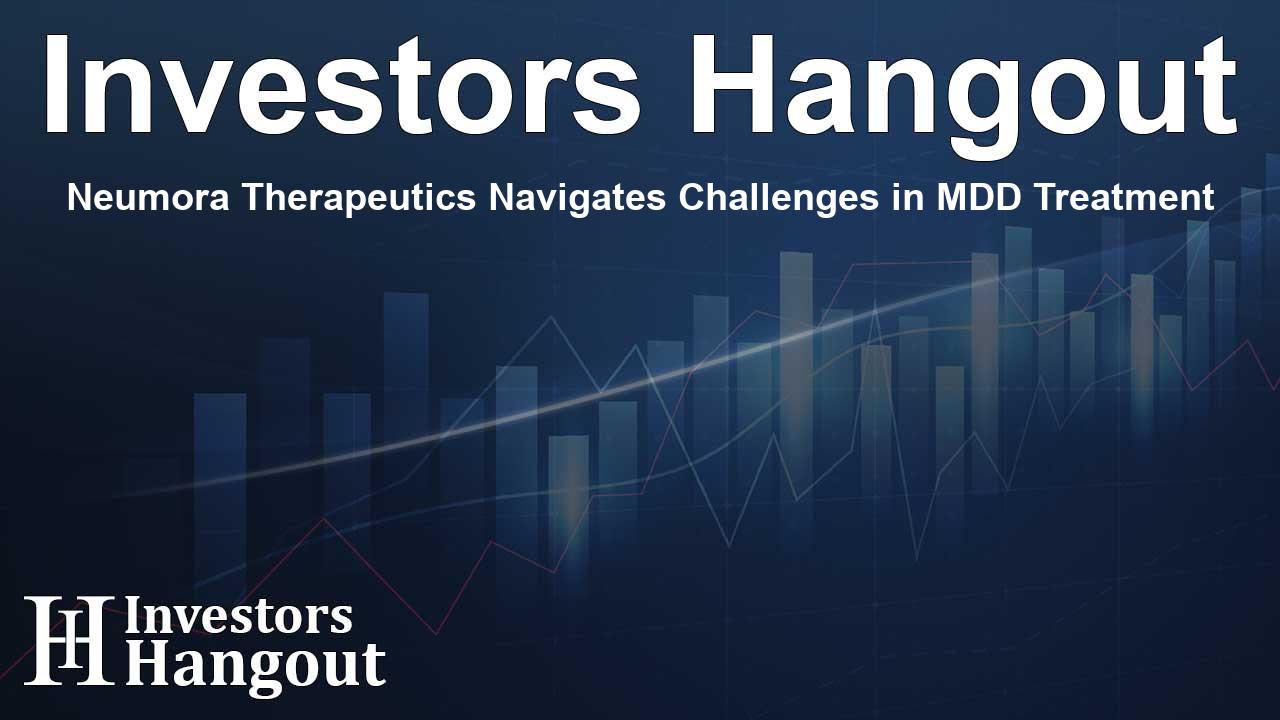Neumora Therapeutics Navigates Challenges in MDD Treatment

Neumora Therapeutics Confronts Major Depressive Disorder Data Challenges
Neumora Therapeutics, Inc. (Nasdaq: NMRA) is making waves in the biopharmaceutical industry with its innovative approach to treating major depressive disorder (MDD). Recently, the company reported outcomes from the Phase 3 KOASTAL-1 study, which centered on their novel investigational medication, navacaprant. Although the study did not show a statistically significant reduction in depressive symptoms overall when compared to placebo, there were notable findings that point to the potential of navacaprant, particularly among female participants.
Understanding the KOASTAL-1 Study Results
The KOASTAL-1 study focused on 383 adult patients diagnosed with MDD, aiming to assess the efficacy and safety of navacaprant, a new treatment designed to target the kappa opioid receptor system. The primary measure for the study was the Montgomery-Åsberg Depression Rating Scale (MADRS), which quantifies depressive symptoms. Unfortunately, the results showed an equal change from baseline for both the navacaprant and placebo groups at Week 6, leading to disappointment among the Neumora team.
Insights from Leadership
Rob Lenz, Neumora's executive vice president, noted the unexpected nature of these results, which diverged from the existing evidence supporting the drug's mechanism for treating MDD. Intriguingly, data indicated differing responses to navacaprant in female patients compared to their male counterparts, suggesting that further research is necessary to understand these dynamics.
Emphasizing their commitment to improving patient outcomes, Henry Gosebruch, CEO of Neumora, expressed optimism despite the unexpected results. He highlighted the encouraging trends seen in the data and reassured stakeholders of the company's financial stability, with a cash balance of $342 million sufficient to fund operations well into mid-2026. Gosebruch also mentioned plans for more updates on the navacaprant program during an upcoming healthcare conference.
Examining Key Study Findings
The study's data indicated that while navacaprant did not achieve primary endpoints, female patients experienced a greater reduction in scores on both the MADRS and the Snaith-Hamilton Pleasure Scale (SHAPS). This suggests that navacaprant could offer benefits for specific demographics, highlighting the importance of personalized approaches in treating mental health disorders.
Safety Profile of Navacaprant
Furthermore, navacaprant exhibited a favorable safety profile, comparable to placebo, and no serious adverse events were reported. This result is crucial for the advancement of any new treatment, as safety is a paramount concern in psychiatric medications. The study measured suicidal ideation and behavior through the Columbia Suicide Severity Rating Scale (C-SSRS), finding no significant differences compared to the placebo group.
Looking Ahead with the KOASTAL Program
The KOASTAL program continues with two additional planned studies, KOASTAL-2 and KOASTAL-3, which aim to replicate the findings from KOASTAL-1 while enhancing the understanding of navacaprant's effects across different demographics. An open-label extension study, KOASTAL-LT, allows patients previously treated with navacaprant to continue receiving care and provide invaluable long-term safety data.
A Focus on Long-Term Solutions
As MDD affects a significant portion of the adult population—over 21 million in the U.S.—and continues to present challenges for healthcare providers, Neumora's research into alternative treatment mechanisms is noteworthy. The focus on the kappa opioid receptor system represents an innovative path towards addressing this complex disorder.
Navacaprant aims to positively influence neural pathways crucial to mood regulation, offering potential for better management of MDD. The drug's once-daily oral 80 mg formulation stands to provide consistent patient compliance, an essential factor in the efficacy of antidepressants.
Frequently Asked Questions
What is navacaprant?
Navacaprant is an investigational medication targeting kappa opioid receptors, developed by Neumora Therapeutics for treating major depressive disorder.
What were the results of the KOASTAL-1 study?
The KOASTAL-1 study showed no significant difference in effectiveness between navacaprant and placebo overall, but some positive trends were observed in female participants.
How did navacaprant perform in terms of safety?
Navacaprant demonstrated a safety profile comparable to placebo, with no serious adverse events reported during the study.
What are the next steps for Neumora following these results?
Neumora plans to conduct further analyses and continue with additional studies (KOASTAL-2 and KOASTAL-3) to gather more data on navacaprant.
Why is the KOASTAL program significant?
The KOASTAL program represents an innovative approach to treating MDD through the examination of novel therapeutic mechanisms, which could lead to better patient outcomes.
About Investors Hangout
Investors Hangout is a leading online stock forum for financial discussion and learning, offering a wide range of free tools and resources. It draws in traders of all levels, who exchange market knowledge, investigate trading tactics, and keep an eye on industry developments in real time. Featuring financial articles, stock message boards, quotes, charts, company profiles, and live news updates. Through cooperative learning and a wealth of informational resources, it helps users from novices creating their first portfolios to experts honing their techniques. Join Investors Hangout today: https://investorshangout.com/
Disclaimer: The content of this article is solely for general informational purposes only; it does not represent legal, financial, or investment advice. Investors Hangout does not offer financial advice; the author is not a licensed financial advisor. Consult a qualified advisor before making any financial or investment decisions based on this article. The author's interpretation of publicly available data shapes the opinions presented here; as a result, they should not be taken as advice to purchase, sell, or hold any securities mentioned or any other investments. The author does not guarantee the accuracy, completeness, or timeliness of any material, providing it "as is." Information and market conditions may change; past performance is not indicative of future outcomes. If any of the material offered here is inaccurate, please contact us for corrections.